This article appeared in the September/October 2020 issue of Discover magazine as “Superbots Save the Day.” Subscribe for more stories like these.
Imagine you’re trapped in the wreckage of a collapsed building. Unable to move underneath the debris, you’re forced to wait, hoping a first responder will soon pull you from the rubble. Finally, something peeks through the tangle of concrete and steel, and you find yourself face-to-face with … a robot?
We have to contend with our fair share of disasters on our little blue planet. These calamities can range from extreme weather events like hurricanes to other naturally occurring phenomena such as earthquakes and volcanic eruptions. Sometimes, as with explosions and bombings, the destruction is intentional — whereas, in the case of nuclear accidents, mining disasters and most wildfires, it’s simply the unfortunate side effect of human activities. Regardless of the cause, for centuries, humans have set out on search-and-rescue missions to save those left in a disaster’s wake.
But in the past few decades, robots have taken an increasingly active role in these rescue efforts. Bots have battled their way through major events like the World Trade Center attacks, hurricanes Katrina and Harvey, the Fukushima Daiichi nuclear disaster and the eruption of Hawaii’s Kilauea volcano.
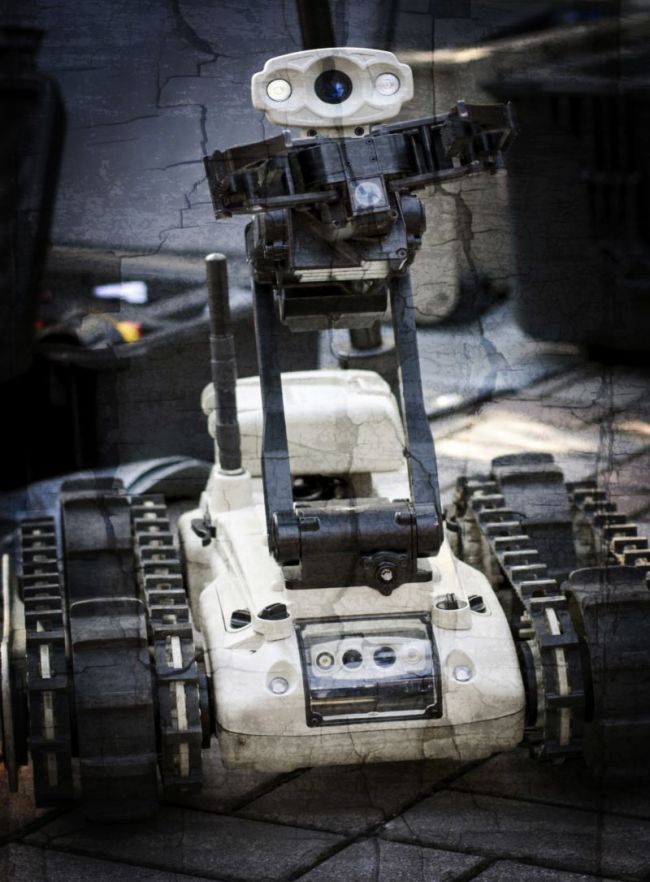
From wheeled vehicles to drones, robots have been used in dozens of disasters over the past few decades. (Credit: Mykhbuh/Shutterstock)
These mechanical saviors can range from ground to marine to aerial vehicles — including drones that don’t just rummage through rubble for survivors, but provide reconnaissance from above. Beyond that, roboticists across the globe are building new, inventive types of rescue robots. Many projects still in development draw inspiration from the animal kingdom, mimicking designs that nature has perfected to make machines that can move through harsh environments, from droids that resemble snakes and cockroaches to a fleet of autonomous bees. And while many are still years away from being used in actual crises, they point toward a future in which — contrary to much of science fiction, where bots bring death and destruction — it’s the robots that come to our rescue.
A Brief History of Disaster Robotics
Scientists began suggesting the idea of using robots for search-and-rescue operations in the 1980s. They were driven by the prospect of bots that could operate in a range of environments, from underground tunnels to volcanic craters to the twisted maze of concrete created when buildings collapse. In short, they wanted robots that could go to places that are unreachable — or simply too dangerous — for human rescuers. “That just seemed to be a go-to application in robotics,” says roboticist Robin Murphy, director of the Humanitarian Robotics and AI Laboratory at Texas A&M University. But these ideas didn’t gain much traction at the time, partly because robots weren’t advanced enough yet to do the tasks being proposed.
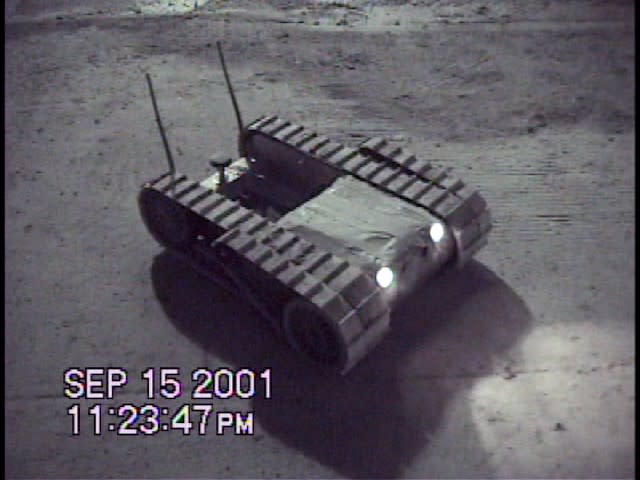
Rescue robots were first used in a disaster on Sept. 11, 2001, just hours after the attacks on the World Trade Center. (Credit: FEMA)
Then, in 1995, at opposite ends of the globe, two major events made scientists take the promise of disaster robotics much more seriously: the Oklahoma City bombing and the Hanshin-Awaji earthquake in Kobe, Japan. The former reduced a significant chunk of the Alfred P. Murrah Federal Building to rubble and killed 168 people. The latter was among the worst quakes in Japan’s history, killing an estimated 6,400 and damaging or destroying nearly 400,000 buildings. In both instances, says Murphy, the difficulty of digging through collapsed buildings made it nearly impossible to reach those confined within. “There were most likely survivors trapped within the deep recesses,” she says. “And you just couldn’t get to them in time.”
Meanwhile, roboticists across the world were working to make more agile robots that could operate in extreme environments. With those two catastrophes as catalysts, the notion of search-and-rescue robotics shifted from an abstract idea into the domain
of applied research. In the U.S., those efforts were led by Murphy, while in Japan, they were spearheaded by roboticist Satoshi Tadokoro; together, they are considered the founders of the field of disaster robotics.
“The Japanese had been working on large robots,” says Murphy. “[They] wanted big robots to rapidly remove rubble.” In the U.S., on the other hand, the emphasis was on building smaller robots to first locate people who were trapped within collapsed structures, and then figure out how to get to them. “[Both approaches] were very measured, with safe engineering practices,” she adds. “But they were two different approaches.”
Rescue robots were deployed for the first time after the attacks on the World Trade Center on the morning of Sept. 11, 2001. By 4 p.m. that day, a team of roboticists from Washington, D.C. — led by Lt. Col. John Blitch of the U.S. Army, founder of the Center for Robot-Assisted Search and Rescue — had arrived on the scene. At the time, the jet fuel that set the towers ablaze was still burning.
“There were places where it was like an oven,” says Murphy, then an engineering professor at the University of South Florida, who led a separate robotics team. Her research group had been ready and waiting to deploy robots in a crisis for a year prior. Murphy and three graduate students jumped in the car as soon as they got word of the attack, bringing small, wheeled robots equipped with headlights and cameras and connected to a tether. “The advantage of a robot was to be able to go [into] places people and dogs couldn’t, and do things they can’t do,” adds Murphy.
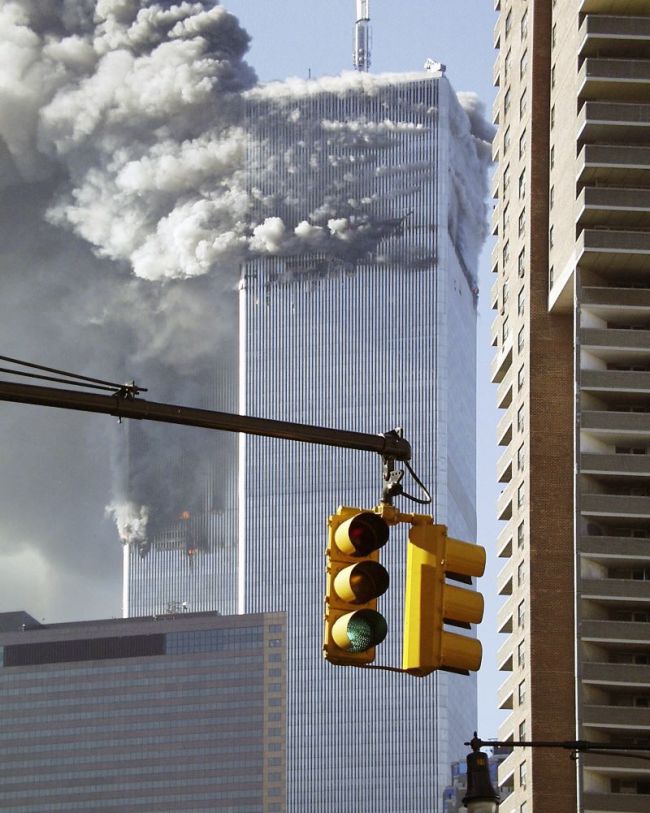
Rescue robots were first used in a disaster on Sept. 11, 2001, just hours after the attacks on the World Trade Center. (Credit: Anthony Correia/Shutterstock)
But getting robots into these places wasn’t always easy. At the World Trade Center site, the scientists quickly realized that they often needed to climb ladders and clamber over debris before they could deploy their robots in these deep recesses. In some cases, the bots had to be carried in backpacks up to half a mile from the staging area.
While these robots didn’t find any survivors after 9/11, they provided invaluable feedback for the researchers under real-time conditions. “We began to see that a smaller [robot] is indeed better,” says Murphy. They also learned that when first responders are working with robots in a chaotic, unstructured environment, two heads are better than one. “You don’t know which way is up, you’ve lost depth perception, it’s dark, you’re under a lot of stress and you’re looking at a small screen,” says Murphy. “All of these things make it very easy to have errors. But if you have a second person, [and] you’re both talking aloud, your performance improves dramatically.” In a 2004 study co-authored by Murphy, researchers found that roboticists who talked more with their teammates were nine times more likely to find survivors in search-and-rescue drills.
Disaster Relief
In the years since 9/11, Murphy — the longtime director of the Center for Robot-Assisted Search and Rescue, now the Humanitarian Robotics and AI Laboratory — has helped deploy robots in response to nearly 30 disasters. When Hurricane Katrina slammed into the Gulf Coast in 2005, Murphy and her team were dispatched to Mississippi, where they used drones to chart the scope of the storm’s devastation. “This [was] such a clear win,” she says. “You can see things immediately; you have this great feedback loop where you can see the extent of the disaster [and] see the flooding.”
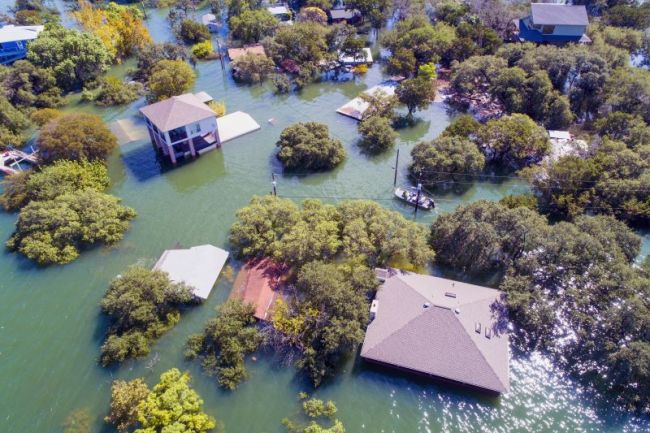
Drones were used to survey the flooding that followed hurricanes Katrina and Harvey. (Credit: Roschetzky Photography)
Over a decade later, in the aftermath of Hurricane Harvey, which unloaded an estimated 27 trillion gallons of rainwater on Texas and Louisiana over six days, Murphy and her team used drones to provide a tactical view from above. The drones were tasked with mapping out the best routes for deploying rescue boats to pluck people from their flooded homes. “They [had] the ability to immediately see how deep the water was in these different parts of neighborhoods, so they could estimate how bad the recovery was going to be,” says Murphy.
Plus, adds Murphy, there are significant economic benefits that come with this type of aerial recon during disasters. In one instance after Hurricane Harvey, the Center for Robot-Assisted Search and Rescue sent drones underneath a closed bridge to assess the extent of the water damage — and found that it was safe to reopen for the public. “That was a major commuter route,” says Murphy. “People could not get back to work until the bridge was open.”
And yet, when most of us think of search and rescue, images of people dangling from helicopters or in the arms of a first responder might pop into our minds. How many lives do these robots actually save?
“That’s like asking how many lives has a firetruck saved,” says Murphy. “The robots don’t go in and pull anybody out — people pull people out.”
But Murphy also points to a moment during the refugee crisis in Greece, during which thousands of people — many fleeing violence in their own countries — tried to cross the Mediterranean and reach the country’s mainland by boat. At one point in 2016, a boat full of people became trapped against rocky shores, where the tall cliffs and high seas made it impossible for the Hellenic Coast Guard to reach them. First responders used a remote-controlled, surfboardlike vessel called EMILY (short for Emergency Integrated Lifesaving Lanyard) as a flotation device to ferry people to safety.
“They saved 26 people that way,” says Murphy.
Snakes and Earthquakes
The field of disaster robotics isn’t just limited to modified vehicles that roll on the ground or scout the skies. Today, scientists worldwide are tapping into the natural processes of plants and animals to build a better class of robot — many of which have potential applications in search and rescue. And while some of these bioinspired bots are still confined to the lab, at least one has been tested during an actual disaster.
On Sept. 19, 2017, a devastating 7.1-magnitude earthquake shook central Mexico. The earthquake’s epicenter, near the city of San Juan Raboso, was just 75 miles from Mexico City. It would result in nearly 370 deaths and damage to more than 44,000 buildings, including many collapsed structures in the capital city.
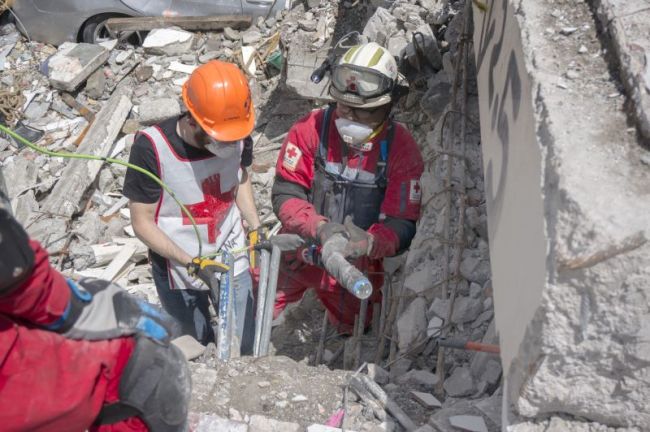
Roboticists and first responders worked together to deploy snake robots after the Mexico City earthquake in 2017. (Credit: Carnegie Mellon University)
The next day, volunteers with Cruz Roja Mexicana, the Mexican Red Cross, asked roboticists from the Carnegie Mellon University Biorobotics Laboratory to bring their biologically inspired machines — specifically, their snake robots — from Pittsburgh to Mexico City to aid in the recovery efforts.
“It was a little bit surreal,” says systems scientist Matthew Travers, co-director of the biorobotics lab. For several days afterward, Travers, alongside researcher Nico Zevallos and graduate student Julian Whitman, rode in an ambulance with first responders as they traveled between the city’s collapsed buildings. With only a gas generator as a power source, they used the cameras on the heads of the modular, skinny robots to peer into a building’s open spaces — and confirm that nobody was trapped inside.
For the past 20 years, scientists at the Carnegie Mellon lab have worked to develop snake robots. By tweaking previous robotics designs, they created a “unified snake robot,” or U-snake, made up of a series of identical, jointed modules that allow the bot’s body to take on a variety of shapes to move through different types of terrain. While the U-snake has been lengthened to include as many as 36 modules, the version deployed in Mexico City only had 16 — making the robot much easier to control. “If you draw a circle in the air with your hand, your elbow [and] shoulder and wrist are doing all the right things so you can draw that perfect circle,” says Howie Choset, a robotics professor at Carnegie Mellon and co-director of the biorobotics lab. “The more joints you have [and] the more degrees of freedom you have, the more difficult that problem [of coordination] becomes.”
But … snakes? Why did it have to be snakes?
In short, says Choset, snakes were a perfect model because their unique shape and range of motion allow them to thread through tightly packed spaces, like a collapsed building. “If you use search-and-rescue as an example, you now have a tool that a rescue worker can use to essentially extend his sensory reach,” says Choset. “It’s a horrible situation in a collapsed building; the rescue worker wants to find the survivor [and] it’s hard to get at [them].” With the advantage of the snake robot’s dexterity, he continues, it could potentially poke through debris to communicate with survivors. “That sort of parallels what snakes are good at,” says Choset. “Because early on in their evolution, they were burrowing animals.”
Travers and Choset acknowledge that the snake robots had somewhat limited success in the aftermath of the Mexico City earthquake. “It wasn’t like we brought the snake robot down there and we won the war,” says Travers.
Because the robot’s camera hadn’t been updated in a while, the video quality was poor. In addition, it wasn’t equipped with any microphones, speakers, proximity sensors or thermal imaging — all features that would have boosted the U-snake’s ability to communicate with victims or map the environment. “The reason why we don’t have more [features] is solely because of money,” says Choset.
Research on snake robots continues to slither along. In February, roboticists from Johns Hopkins University published a paper saying that their snake robot moved faster than most previous designs — even approaching the speed of their biological counterparts. Yet despite recent advances like these, adds Choset, it remains a challenge to get funding to develop search-and-rescue robots.
A Menagerie of Rescue Robots
While snakes are a prime example of bioinspiration for roboticists looking to mimic nature’s designs, the idea of building machines that draw inspiration from animals is hardly new. Starting in the late 15th century, for example, Leonardo da Vinci modeled his designs for a flying machine based on the wings of a bird or bat. “In the last 20 to 30 years, there’s definitely been more engineers trying to look at biological organisms for inspiration,” says Kaushik Jayaram, assistant professor of robotics at the University of Colorado Boulder. “Part of it is maybe just that we know a lot more about biology, so we can actually understand how animals move.”
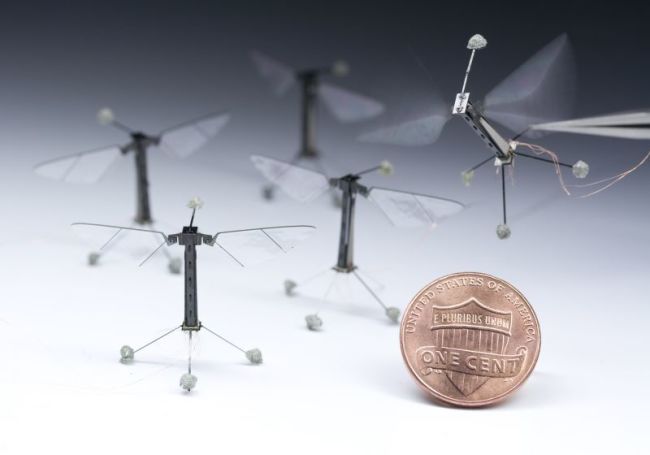
About half the size of a paper clip, RoboBees could be deployed in swarms to fly through collapsed structures. (Credit: Wyss Institute at Harvard University)
Jayaram is no stranger to the science of animal locomotion. While working as a research assistant at the University of California, Berkeley, he led a study published in 2016 to better understand how the Periplaneta americana, or the American cockroach, is able to squeeze through tiny cracks and crevices so swiftly. “It turns out they’re able to squish their exoskeletons by more than half and compress themselves from a standing height of around 15 millimeters to a mere 3 millimeters, which is roughly the size of two stacked pennies,” says Jayaram. “They’re able to do this in less than a second.” And even when the creepy critters are squeezing through small gaps, they can still move at speeds of around five body lengths a second. Scaled up to human size, says Jayaram, that’s around the same speed as Usain Bolt’s world record.
As part of the same study, the research team was then inspired to craft a soft, palm-sized robot that splays its legs sideways when flattened, allowing it to quickly squish through tight spaces half its height. Dubbed CRAM, or compressible robot with articulated mechanisms, the robot was topped with a plastic shield similar to a cockroach’s exoskeleton, allowing it to move quickly through confined spaces. The scientists say the robot could be used to move through rubble in the aftermath of tornadoes, earthquakes or explosions. “These kinds of robots would be deployed in swarms,” says Jayaram. “I envision them crawling over these highly unstructured environments and trying to find signs of life using sensors.”
Other researchers have suggested sending out swarms of insect-inspired robots for disaster relief, too. At Harvard University, roboticist and engineering professor Robert Wood has been developing RoboBees — tiny, flying robots with a wingspan roughly the size of a half-dollar coin. In 2019, one of the RoboBees took to the skies on its first solo mission without the use of a power cord, becoming the lightest vehicle ever to attain continuous, untethered flight. “We know these robots to be small, agile and fast, meaning that they could potentially get into the nooks and crannies of collapsed structures,” says Wood. “Ideally, these things would be very low cost. Instead of having one all-powerful robot, maybe you could have thousands of these little things. And maybe most of them fail, but you get more robust coverage if you have large numbers.”
Wood says that he could envision rescue workers carrying a kit, much like a laptop case, that opens up to deploy a fleet of RoboBees to survey a certain area, returning periodically to share any data. But he also acknowledges that he’s still far from achieving that vision, which may take anywhere from 10 to 20 years to become a reality.
However long it takes for robots to be more widely used in disasters, they might have to overcome some anti-automaton bias in the process. According to a 2017 survey by the Pew Research Center, more than 70 percent of Americans are worried about a future where robots and computers can do jobs currently done by humans. But scientists like Travers think rescue robots could fundamentally change how we think about machines. “If you’re trapped in a building during a flood and a robot finds you, it’s going to [change your perspective],” he says. “Once it becomes crystal clear that automation and technology is helping more than it’s hurting, that [shift] will start to happen.”
Bots Could Help Combat COVID-19
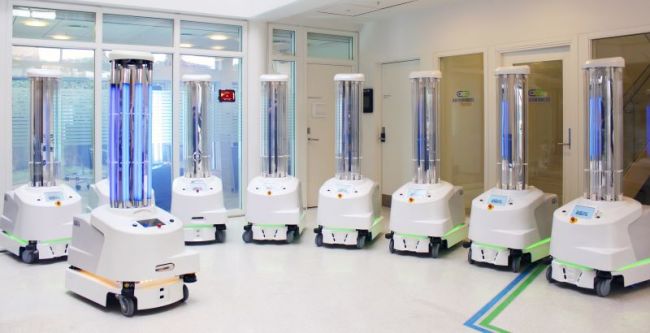
An army of UV-light robots stands at attention; they’re already disinfecting hospitals in China and parts of Europe. (Credit: Merima Cikotic/Blue Ocean Robotics)
As health care workers, grocery store employees and delivery truck drivers repeatedly expose themselves to COVID-19, one thing has become clear to engineers: Robots could be handling some of these tasks.
In an editorial in Science Robotics published in March, researchers contend that many essential but risky jobs could be performed by robots during health emergencies. Some early technologies already manage a few of these tasks, like sanitizing surfaces, the 13 scientists write. But, for the most part, technological substitutes for jobs like patient throat swabbing still need financial and institutional backing to get up and running.
There are some less obvious uses for robots during health emergencies, too. Isolation for those in quarantine can come with emotional and mental burdens. Social robots could fill some of that void while maintaining distance between humans — something that will take serious advancements in emotional and contextual decision-making technology.
But whether robotics researchers can sustain funding and interest long enough to get devices like these ready for the next global health emergency remains to be seen.
— Leslie Nemo


